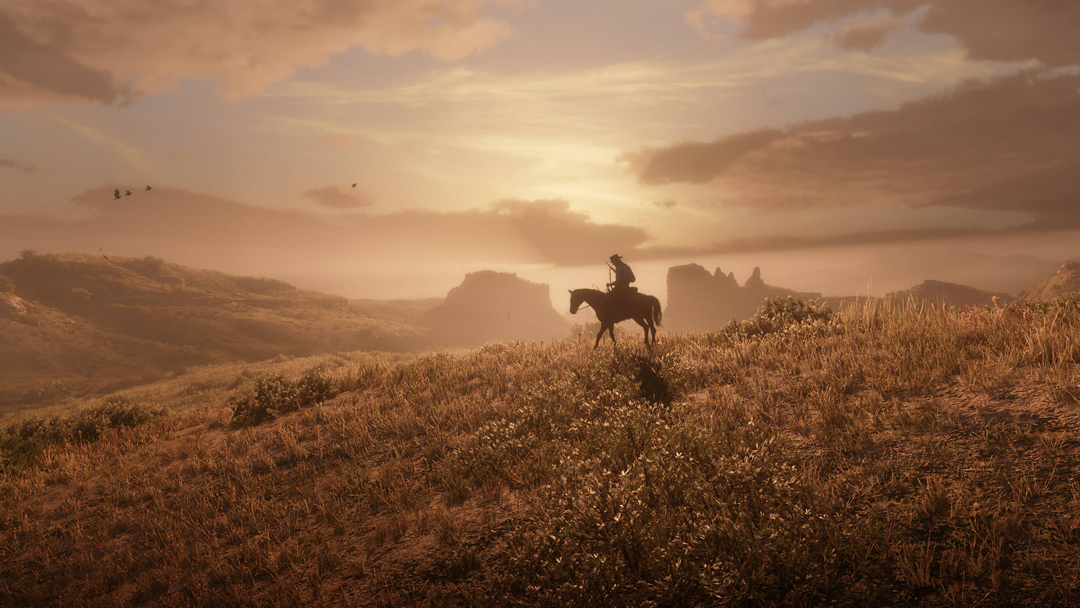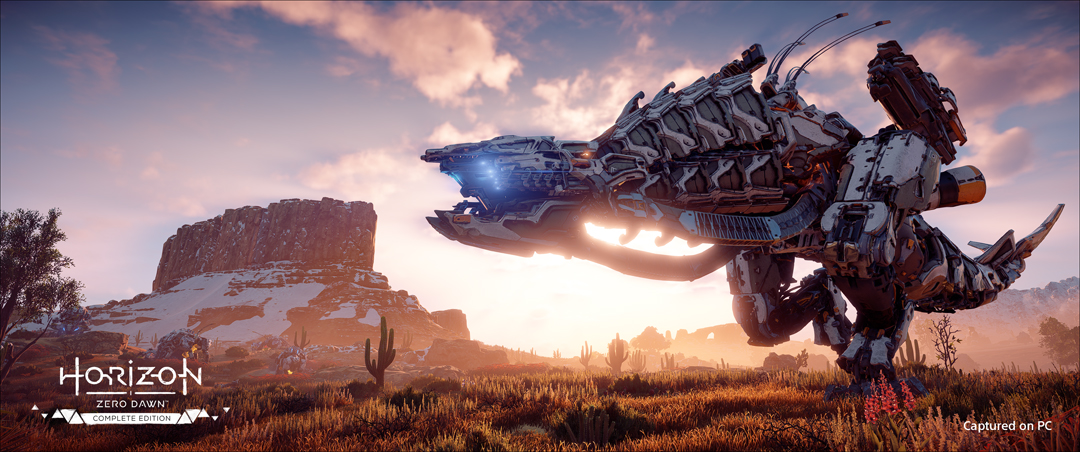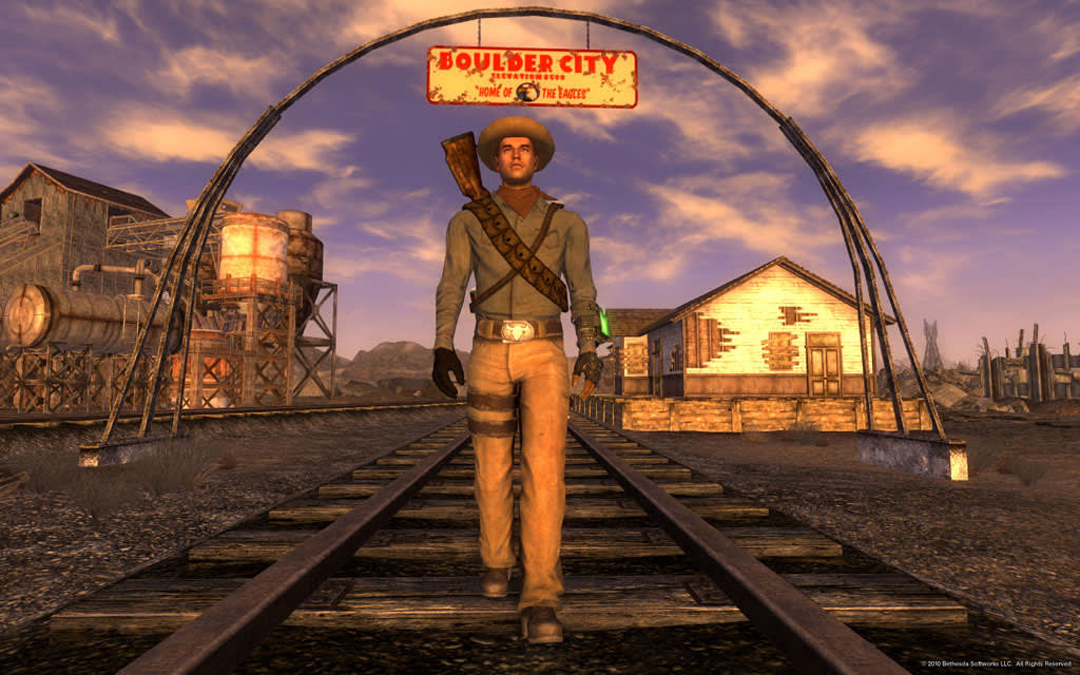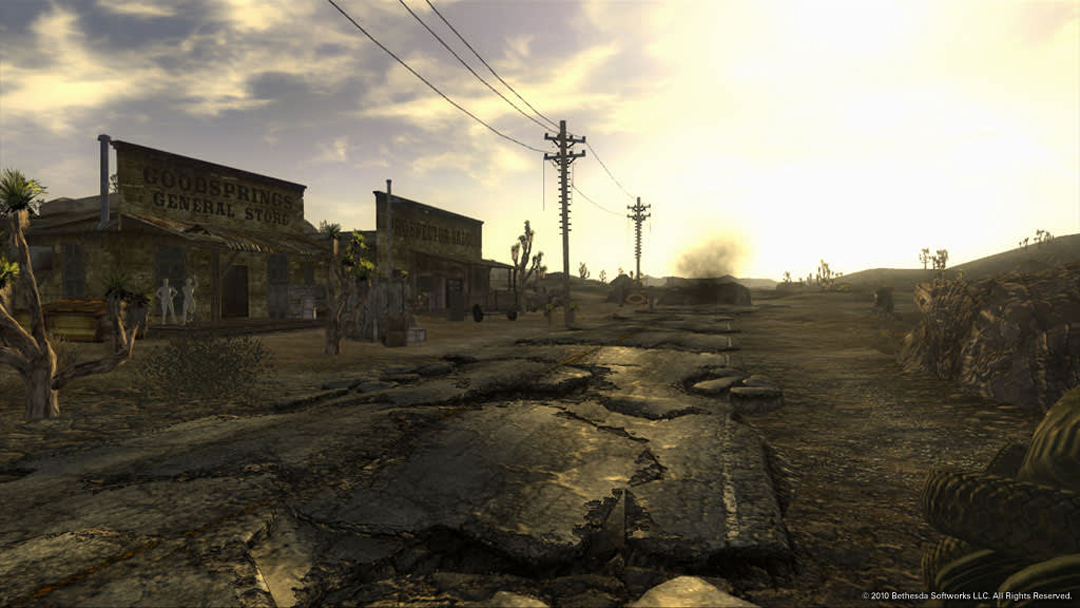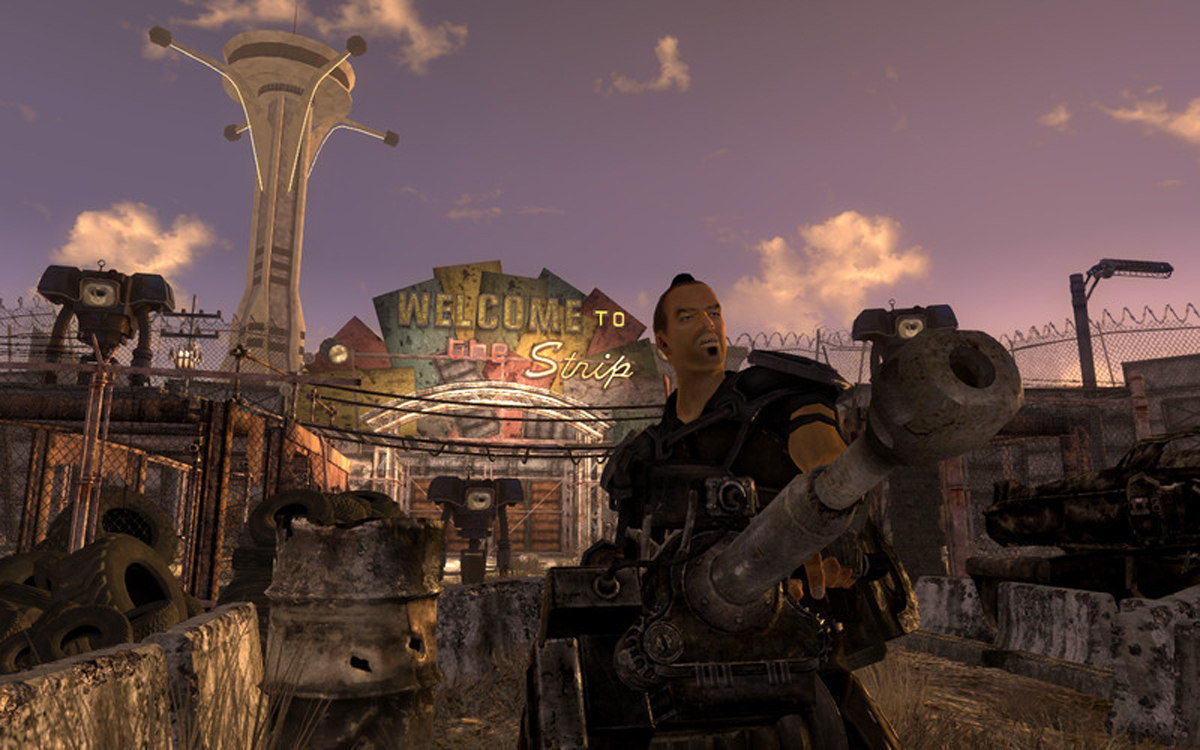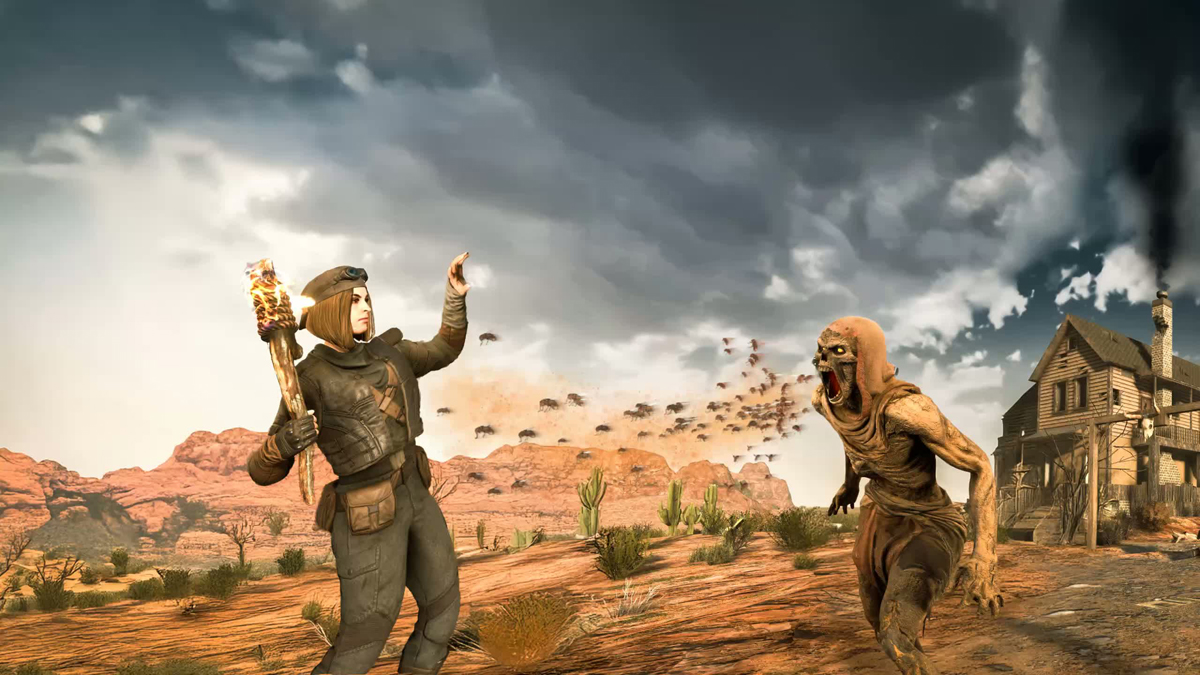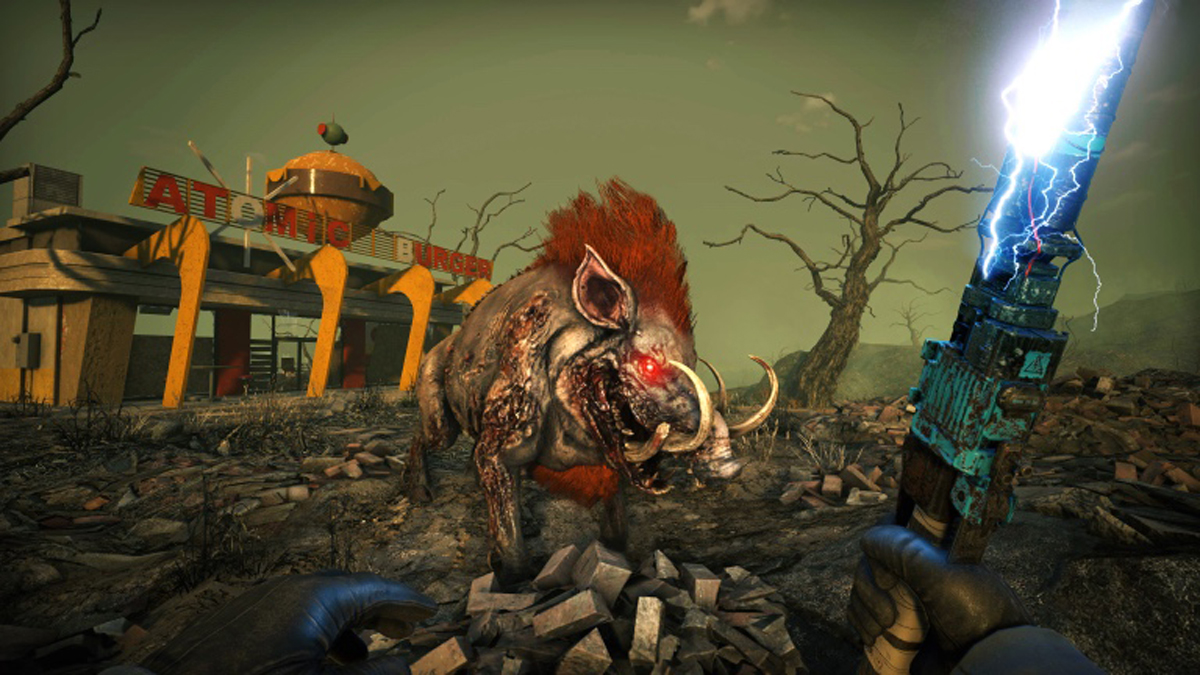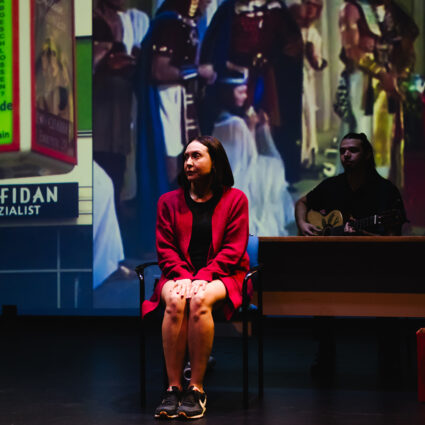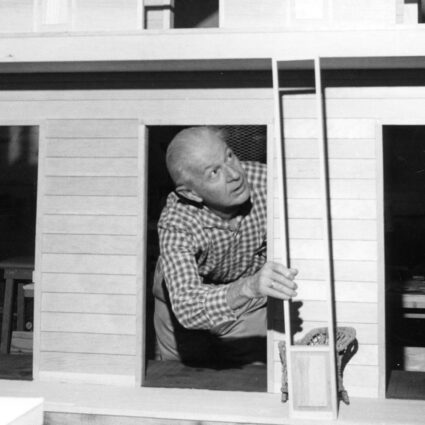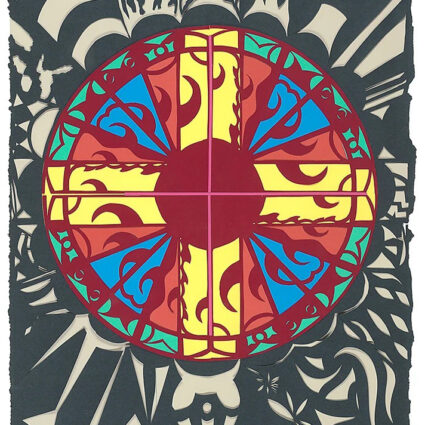Exquisitely detailed and experimental depictions of the Southwest abound in today’s video games—so why aren’t they considered landscape art?
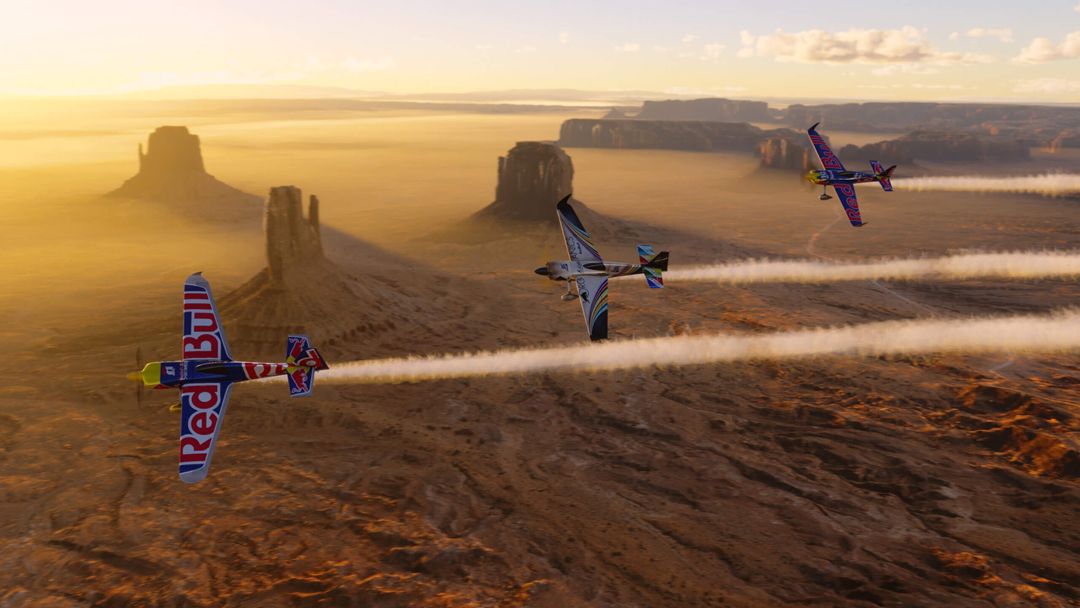
In the American Southwest, video game culture is woven into the landscape—sometimes quite literally. Due to bankruptcy amid a video game industry crash in 1983, Atari discreetly buried thousands of unsold copies of E.T. the Extra-Terrestrial in Alamogordo, New Mexico. The Atari 2600 cartridges were disinterred in 2014, becoming a juncture between iconic Southwest geography and the world of video games.
Beyond this historical episode, there is a profound artistic relationship between video games and the natural beauty of the Southwest. The region has been a frequent muse for other contemporary art forms such as drawing, painting, and photography. Likewise, video game design deserves a spot in the genre of Southwest landscape art.
Game illustrators [have] a substantially broader canvas than artists in other fields.
Southwest-set games vary widely in their commitment to accuracy, from fantastical adaptations that capture a regional vibe, to simulation-type (or “sim”) games that closely portray real-world settings. Early video game terrains lacked detail and leaned on pixelated charm, but technological advancements like physically based rendering enabled larger, more complex maps and diverse styles. PBR imitates hyper-realistic textures by simulating light interaction.
By the early 2000s, elaborate representations of the Southwest proliferated, transforming video game landscapes into valid timestamps. Similar to photography, near-accurate geographical depictions in video games may be viewed as historical records in the future.
Today, video game atmospheres present extraordinary opportunities to tour the Southwest. “Open-world” games—which allow players to explore wide-ranging landscapes with minimal boundaries—offer game illustrators a substantially broader canvas than artists in other fields. Discovering a familiar city, landmark, or vista through exploration and task completion can trigger Neo-Surrealist sensations of lucid dreaming.

Simulation Games
For aerial views of the Southwest, embark on a lofty voyage in Microsoft Flight Simulator. Exploration is a perk for the player who embodies a pilot. The game changes along with the real world, resulting in highly accurate scenic depictions.
Drive across the United States as a truck driver in American Truck Simulator, which offers fairly accurate digital panoramas. The goal in this sim game is to deliver cargoes across many regions. Travel through Arizona’s Tonto National Forest, traverse Colorado’s curving roads deep within Rocky Mountain forests, cruise along Nevada’s Las Vegas strip, pass by the canyons and plateaus of New Mexico, journey through Texas’s plains, and see Utah’s abstract sculpture called Metaphor; all great choices for an interactive and versatile sightseeing experience.
Taking the landscape accuracy down a notch, Southwest-inspired locations allow for nuanced recreations.
In Ranch Simulator: Southwest Ranch & Farm Expansion Pack, become a rancher surrounded by a rustic setting. The objective is to run multiple ranches across the Southwest—a slightly more interactive approach. What better place to build a thriving business than stunning Southwest-inspired landscapes?
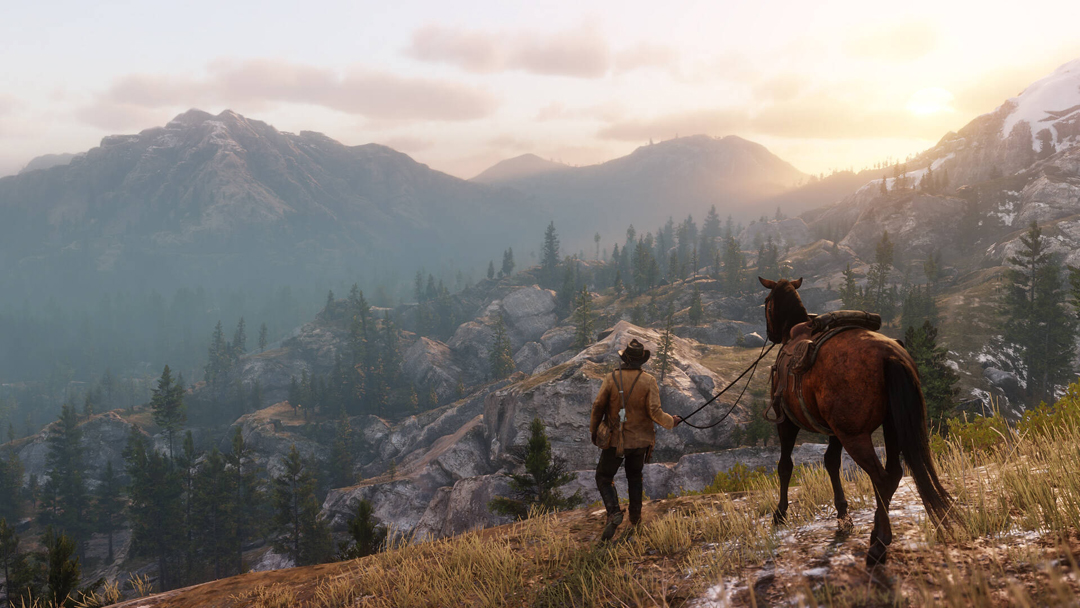
Historical Fiction
Fictional adaptations of Southwest history provide a distinctive virtual experience of the landscape.
The backdrops of the popular Red Dead Redemption franchise feature diverse topography—parched expanses, craggy canyons, and more. Red Dead Redemption 2 is an open-world game set on the American Frontier in 1899, with Southwest-inspired locations rich with regional flora and fauna. Fictitious territories in the franchise that contain similarities to New Mexico, Texas, Utah, and the Mexico borderlands are called “New Austin,” “Nuevo Paraíso,” and “West Elizabeth.”

Science Fiction
Certain narrative-driven games call for futuristic or apocalyptic renditions of the Southwest. The Horizon series portrays a near-future dystopian U.S. with loose portrayals of Colorado, Utah, and parts of northern Arizona. Fallout: New Vegas—also set in an apocalyptic future—closely resembles real-life locations and landmarks, like the roller coaster dubbed “El Diablo” at the fictional Bison Steve Hotel, which accurately emulates the now-closed Desperado coaster at Buffalo Bill’s Resort & Casino in Primm, Nevada.
Another post-apocalyptic narrative that passes through Colorado and Utah is The Last of Us series. Though not categorized as open-world game, this story-rich survival game includes open-world elements that offer views of Colorado’s fictional University of Eastern Colorado and Lakeside Resort, as well as a fairly accurate depiction of Temple Square in Salt Lake City, Utah.
In the open-world zombie survival game 7 Days to Die, Arizona State Routes 73 and 260 cross the fictional Navezgane County (Apache for “Killer of Monsters”). Roughly resembling Arizona and the surrounding region, the environment includes road signs for cities like Alamogordo and Albuquerque.
These are only a few examples in an ever-growing atlas of Southwest-inspired video game environments. The form is becoming even more captivating through virtual reality, significantly enriching digital-world experiences. Nothing beats seeing the real thing, but when physical trips are not an option, exploring landscapes through interactive digital travel can inspire new bucket list destinations. It’s an unconventional—and electrifying—way to experience Southwest landscape art.
Video games mark every box on the art-world checklist: craft, emotion, cultural relevance. Like other Southwest landscape art, these games pair arresting vistas with narratives that resonate. The question isn’t whether games belong in museums, it’s why gatekeepers are still arguing about it.



